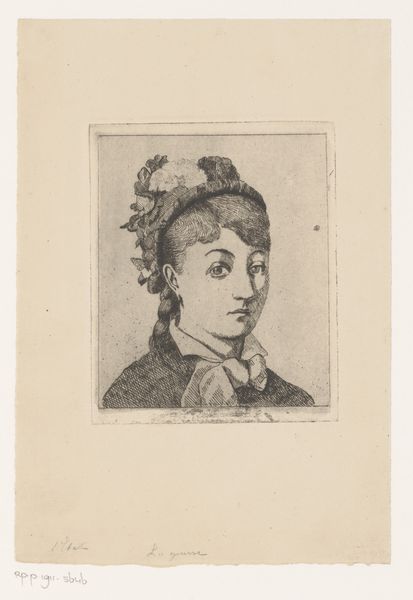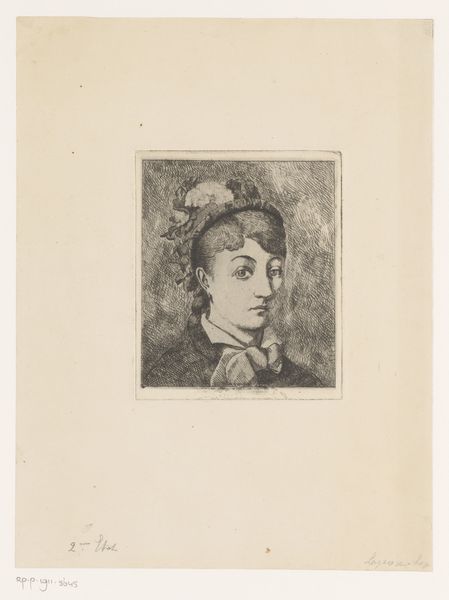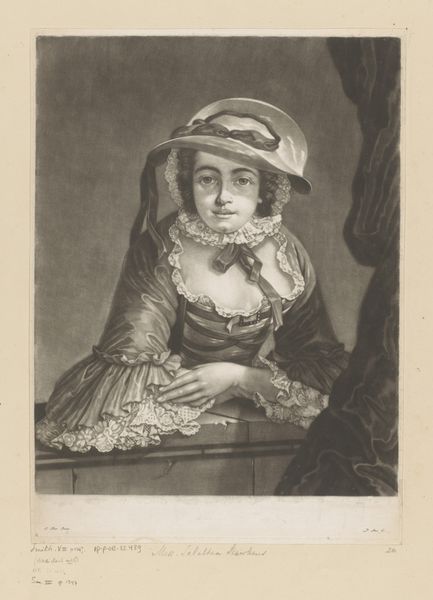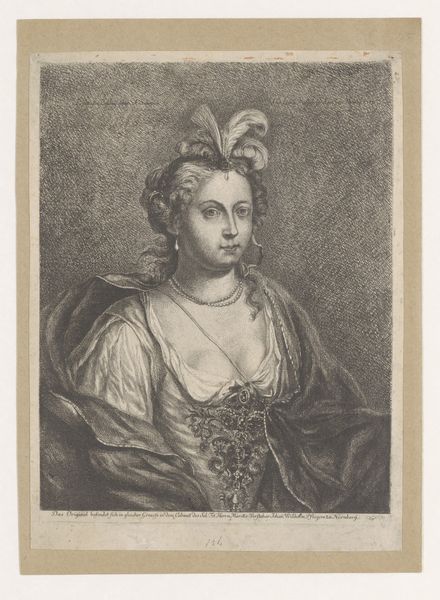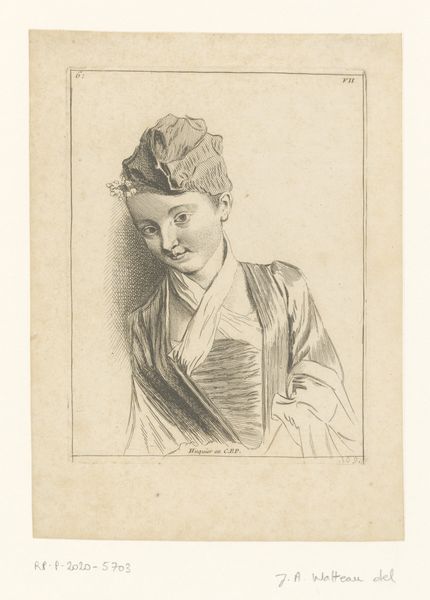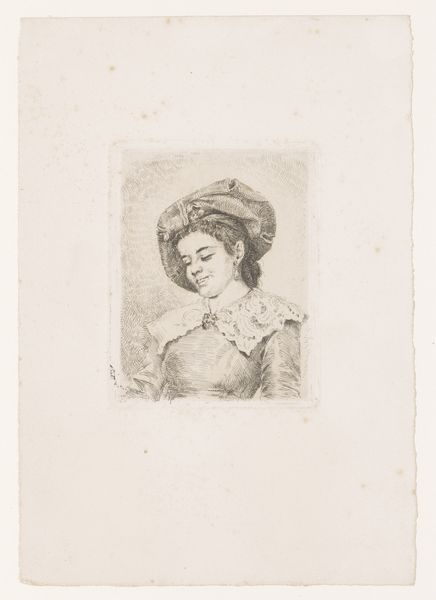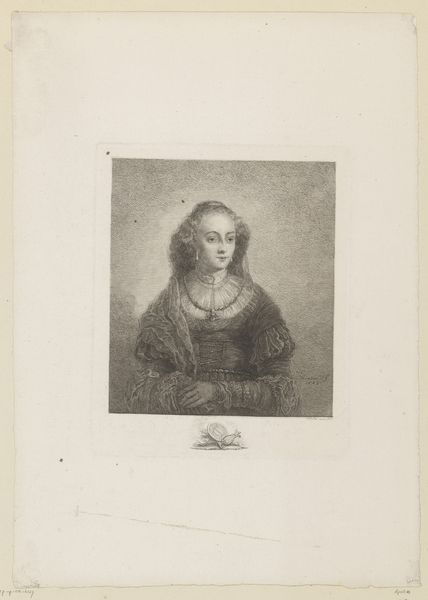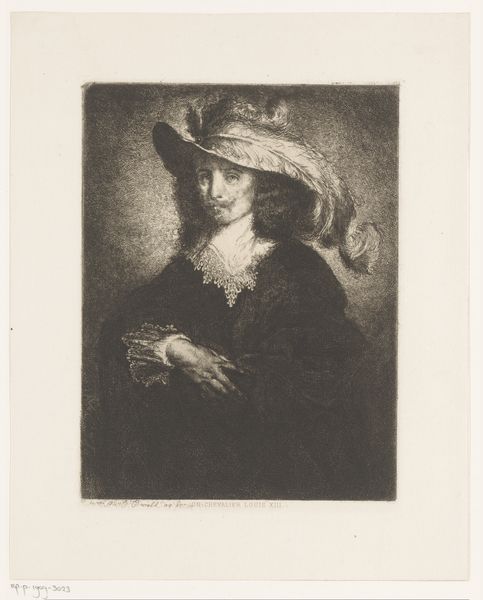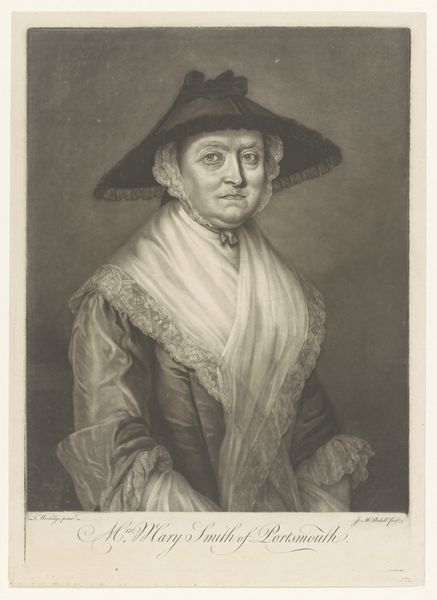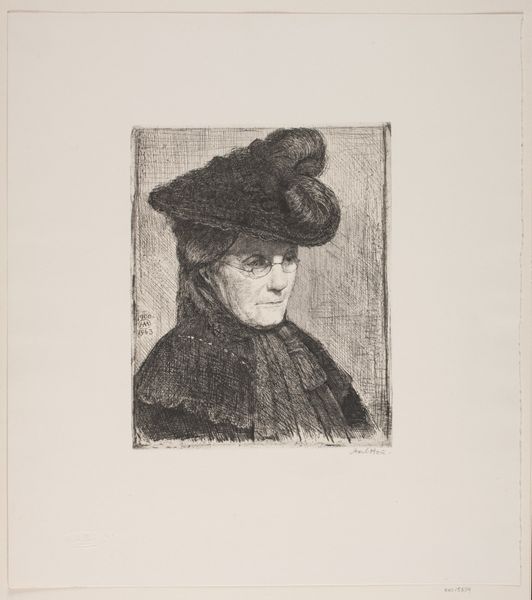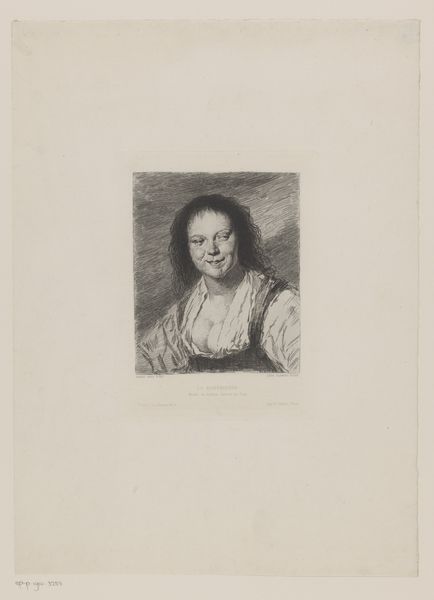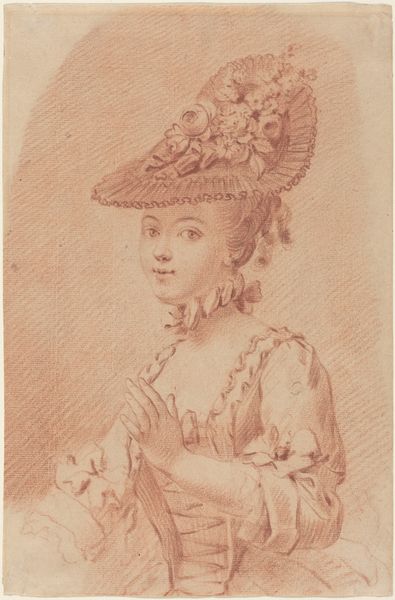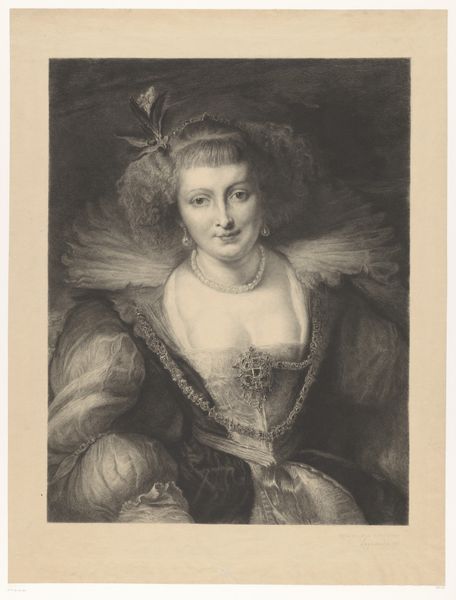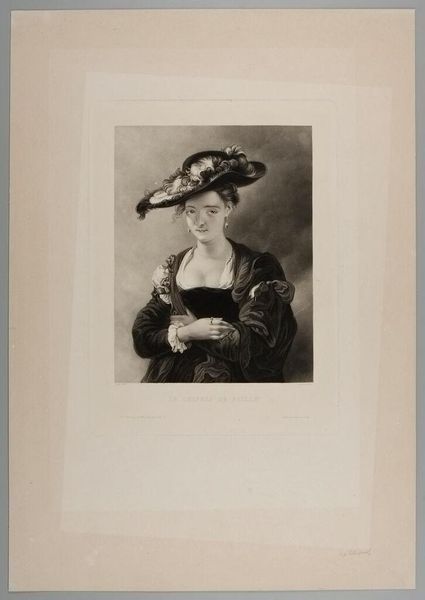
Dimensions: height 110 mm, width 90 mm
Copyright: Rijks Museum: Open Domain
Editor: Here we have "Portret van Helena Fourment," an etching made sometime between 1760 and 1835 by Andreas Bernardus de Quertenmont, currently residing at the Rijksmuseum. There's something quite striking about its intimacy despite being a printed work. How would you interpret this piece through its historical context? Curator: Well, the portrait presents an interesting view of representation. We are viewing what seems to be a copy, from an engraving of a portrait made decades before. It beckons us to think about how the image of Helena Fourment, Rubens's wife, has been presented and consumed across time through various media, from painting to print. Consider the role of the print in disseminating and perhaps altering elite imagery for a wider audience. Editor: So, this image served more as a popularized version, less exclusive than an original painted portrait? Curator: Precisely! Printmaking in this era significantly impacted art's accessibility and visibility. Reproductions like this one allowed the rising middle class to engage with and emulate the tastes of the elite. What do you notice about the artistic style itself, within that socio-economic context? Editor: I see it has characteristics of Baroque portraiture, although perhaps simplified for the printmaking process. The detail in her dress and hat seems intended to convey a sense of wealth and status. Curator: Indeed. And how does the print, as a commodity itself, contribute to that circulation of status? Editor: That’s a great point; it makes you wonder how access to these kinds of images shaped social aspirations at the time. Curator: It's a compelling example of how art and its reproduction participate in the ongoing construction and reinforcement of social hierarchies and ideals. The image isn't just a portrait, but an object circulating within a complex social system. Editor: That definitely shifts how I view the work; I see the power of print in democratizing art, while at the same time preserving those power dynamics. Thanks for this deeper context!
Comments
No comments
Be the first to comment and join the conversation on the ultimate creative platform.
